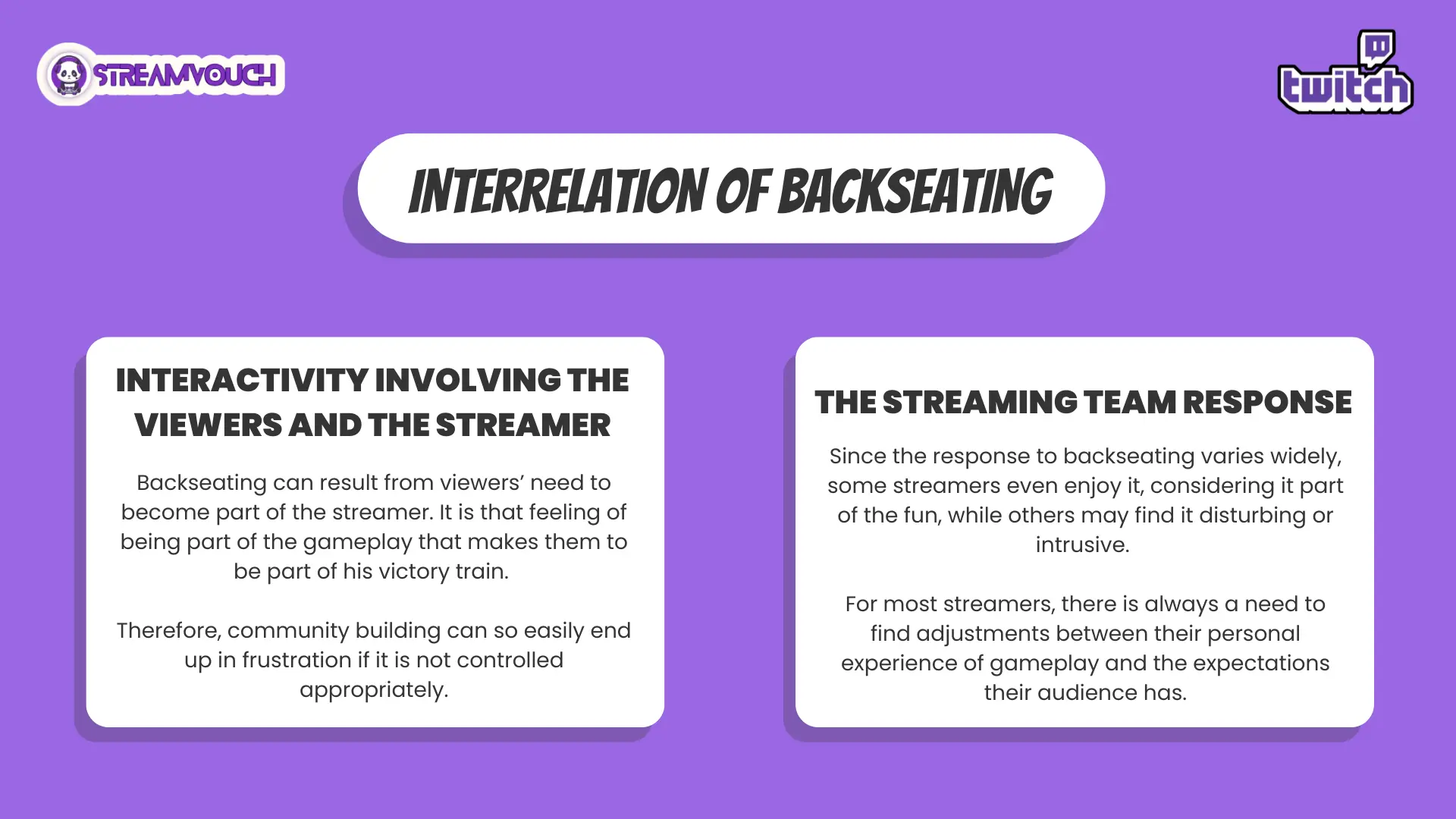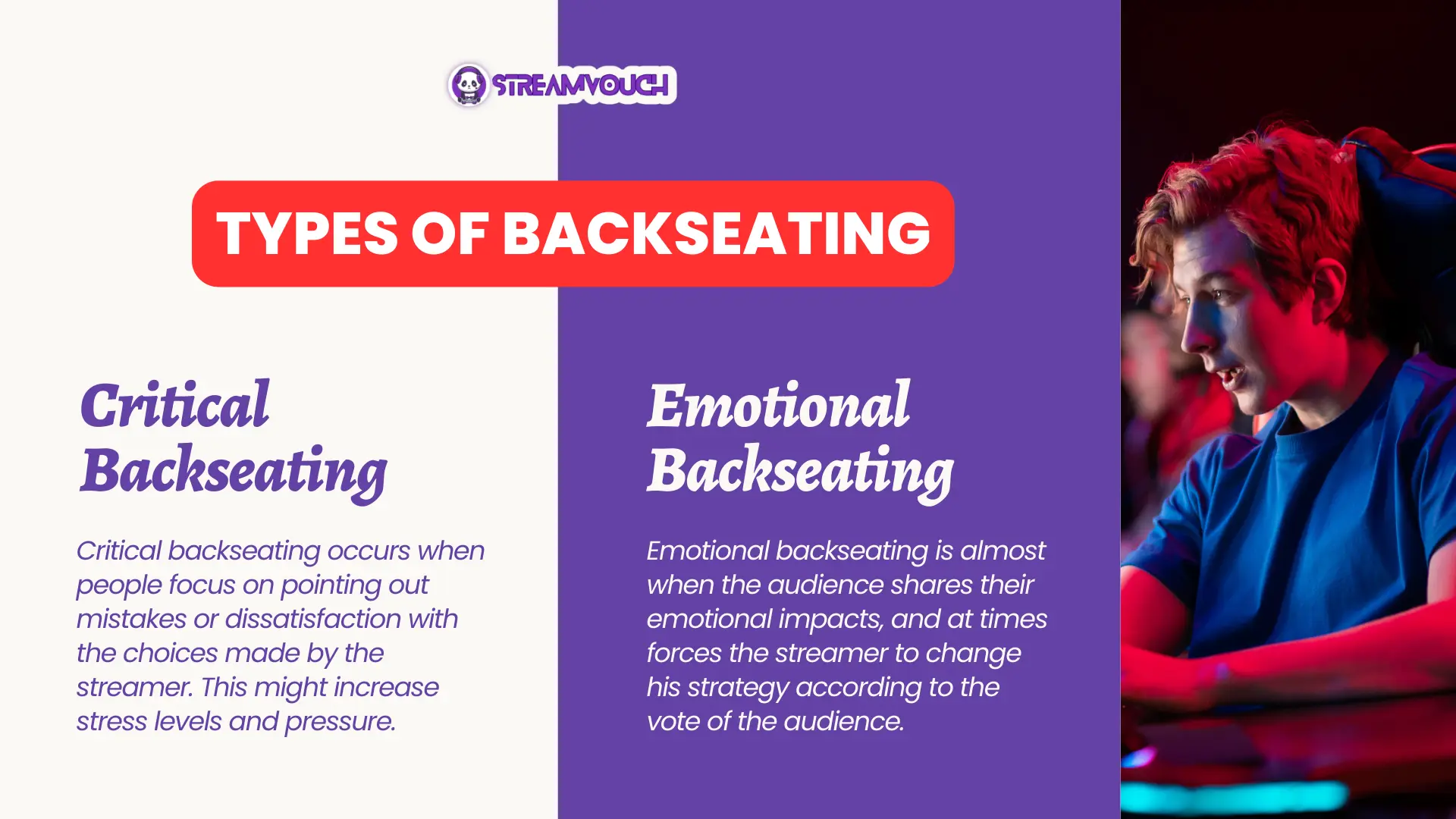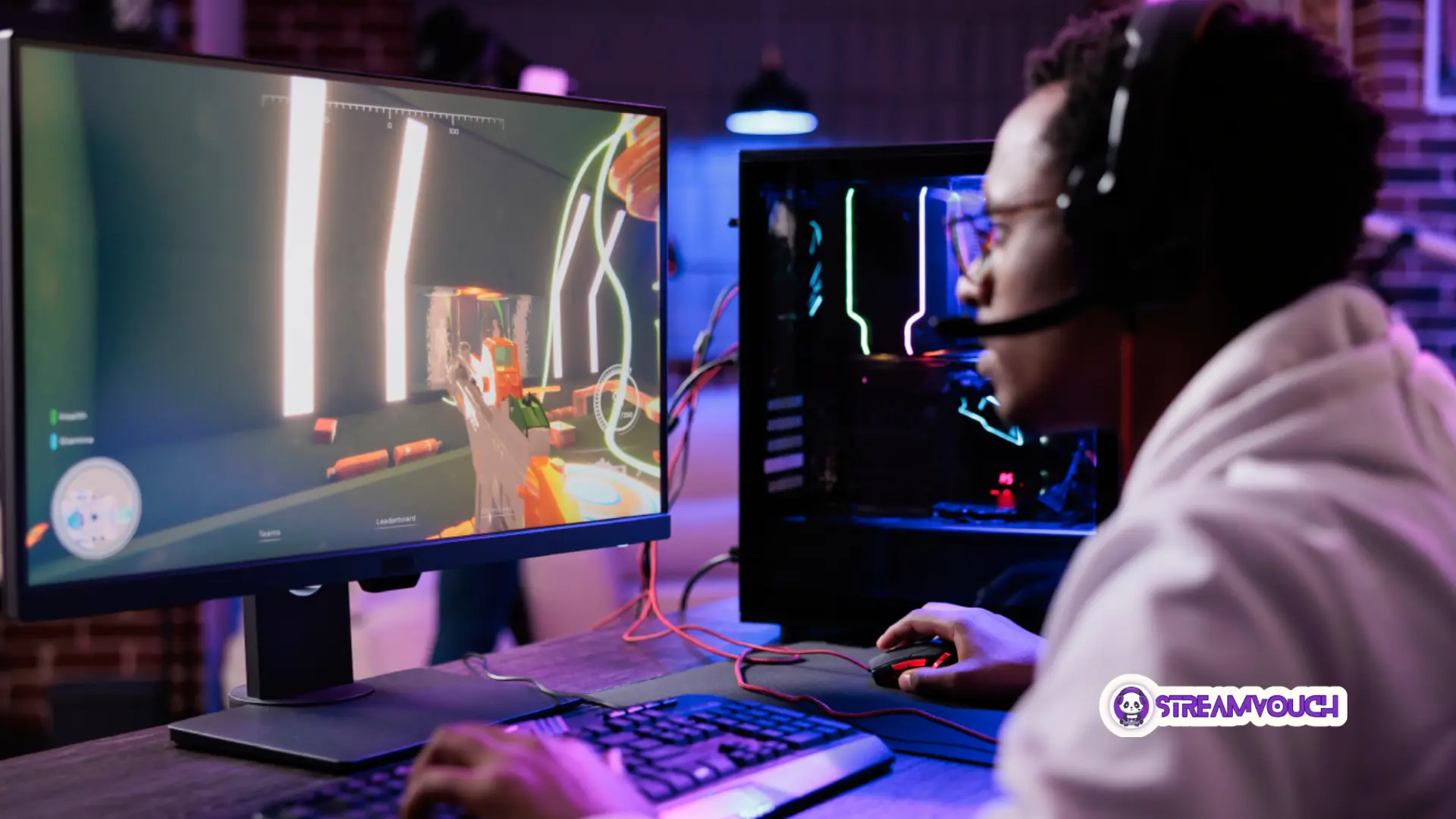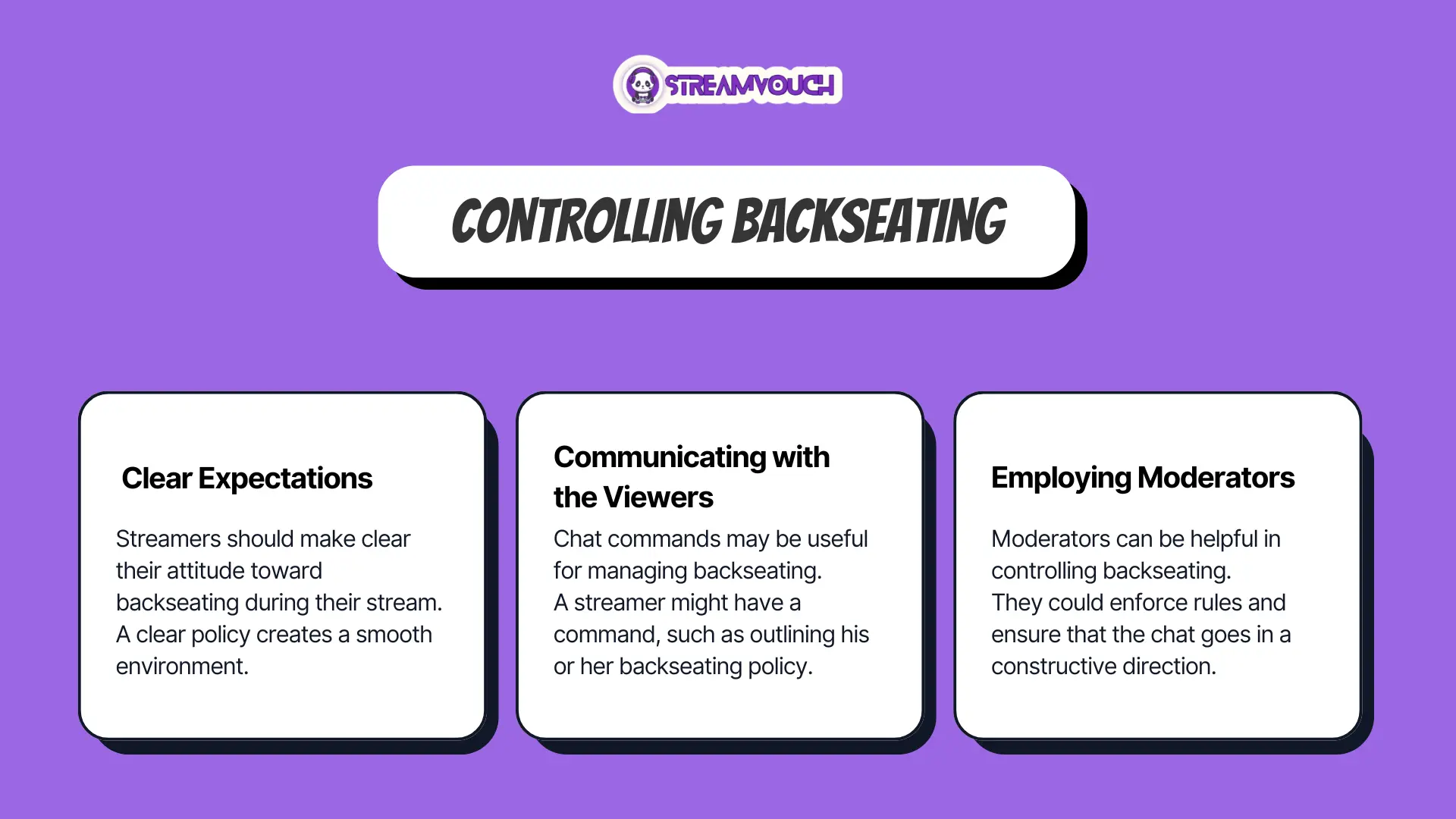What is Backseating in Twitch? | Types of Backseating
Backseating by its definition, is unasked for advice and instructions from viewers to the streamer during gameplay. Backseating may vary greatly in tone and intent.
Healthy backseating in Twitch, with meaningful constructive suggestions, is generally positive, complimenting the viewing experience with valuable insights and reflecting a collaborative sense.

Toxic back seating results in frustration, stress, and even burnout for the streamer; this is usually due to viewers making fun of the streamer’s choices or setting impossible expectations on their part.
The management strategies include defining what feedback is wanted, incorporating moderators to check comments for restrictions, and communicating with the audience about wanting less interaction. If you are a new streamer on Twitch, let’s understand what is backseating and how it can benefit you.
Table of Contents
What is Backseating?
Backseating refers to the act of interrupting a streamer in the course of a game by means of tips or strategy from an audience member. This can be harmless tips and demands which might become blunt.

The phenomenon of backseating is an old concept in the gaming culture. The communication that has changed the way gamers interact with one another using a platform like Twitch streams, thus instant communication between streamers and audiences.
Backseating in Twitch can be distracting, and understanding how to choose the best Twitch chat overlay can improve the viewing experience.
Interrelation of Backseating
Giving unsolicited advice or criticism to a bystander usually in a game or driving scenario is called backseating. The trend has effects on dynamics between participants and has repercussions on performance and enjoyment. Understanding the meaning of backseating reveals how communication styles, relationships, and pressure might compromise decision-making in high-stakes situations.

Interactivity Involving the Viewers and the Streamer
Backseating can result from viewers’ need to become part of the streamer. It is that feeling of being part of the gameplay that makes them to be part of his victory train. Therefore, community building can so easily end up in frustration if it is not controlled appropriately.
The Streaming Team Response
Since the response to backseating varies widely, some streamers even enjoy it, considering it part of the fun, while others may find it disturbing or intrusive. For most streamers, there is always a need to find adjustments between their personal experience of gameplay and the expectations their audience has.
Types of Backseating
Backseating can assume multiple forms; each has specific characteristics and impact. One form is advisory backseating where viewers advise the streamer or provide strategy. Ideally, such tips become constructive when they come from people who know what they are doing.

Critical backseating occurs when people focus on pointing out mistakes or dissatisfaction with the choices made by the streamer. This might increase stress levels and pressure.
Emotional backseating is almost when the audience shares their emotional impacts, and at times forces the streamer to change his strategy according to the vote of the audience.
In addition, there is competitive backseating, where people compete with each other in a relatively more competitive manner, trying to outdo efforts that might be put by the streamer or undermine his confidence.
These types of backseating help the streamers adjust their communication, thus facilitating more positive engagement while preventing negative influences that, in the end, make it enjoyable for everyone concerned.
Healthy Backseating
Healthy backseating entails offering constructive suggestions or tips that enhance gameplay without overloading the streamer. Growth and learning are manifest due to this collaborative atmosphere. Constructive feedback is generally embraced and appreciated so as to help in the growth of the streamer, yet engaging the audience at the same time.

Examples:
- Providing an effective strategy towards winning a puzzle game, like a specific method in beating a particular level.
- Offerings: insight into character development builds for an RPG that could suggest the highest-performing skill combinations to maximize either damage or survivability.
Toxic Backseating
This is toxic backseating: condescending comments and sometimes passive-aggressive commentary designed to undermine a streamer’s confidence. It can completely ruin the feel of the experience, leaving the streamer feeling belittled and pressured. It causes tension in the community.

Examples:
- Expecting the streamer to make decisions based on the preferences of the viewer and ignoring his unique playstyle or strategies.
- Mocking his decisions or skills, usually through sarcastic remarks and talking about what they may think is failure and mistakes instead of giving critical comments.
Backseating in Twitch often happens during live discussions, which is why some viewers prefer options like how to popout Twitch chat.
Effects of Backseating
Backseating in the streaming environment has a marked effect on both streamers and the audience. Backseating can be viewed as beneficial since it can give the viewers a sense of belongingness, and by interacting, the viewership is enhanced. On the other hand, backseating comes with challenges that may strain the relationships and consequently performance.
The analysis of the impact on and between these two groups highlights the intricacies of complex dynamics in interactive entertainment.
On Streamers
Positive Effects:
- Increased viewership through engagement from the viewers.
- Educative opportunities from experienced viewers.
Negative Effects:
- Increased stress and pressures.
- Risks of burnout due to criticism overload.
Streamers using low-end PCs may find it harder to manage both gameplay and chat simultaneously, which increases stress. In such cases, choosing the best streaming software for low-end PC can reduce technical pressure and improve overall performance.
On Viewers
Positive Effects:
- A feeling of participation and belonging.
- Knowledge and experience sharing.
Negative Effects:
- Feeling frustrated if their advice is not taken into consideration.
- Chat becomes tense if there’s disagreement.
Controlling Backseating
Clear boundary setting and stream guidelines for interaction are essential to controlling backseating. For instance, a streamer may use moderators to manage the chat, slow down the mode in order to reduce chaos in chat, or even explicitly tell their audience when they want feedback.
It creates a space where interaction is respectful, which boosts engagement with low levels of stress and probable conflict. Moderators can be helpful in controlling backseating, especially when supported with tools like StreamElements moderation tools . They help enforce rules and ensure that the chat goes in a constructive direction.

Clear Expectations
Streamers should make clear their attitude toward backseating during their stream. A clear policy creates a smooth environment.
Communicating with the Viewers
Chat commands may be useful for managing backseating. A streamer might have a command, such as outlining his or her backseating policy.
Employing Moderators
Moderators can be helpful in controlling backseating. They could enforce rules and ensure that the chat goes in a constructive direction.
| Management Strategies | Description | Benefits |
| Setting Boundaries | Clearly communicate backseating preferences | Set a boundary of comfort for the streamer. |
| Communicate | Use chat commands to outline policies | Avoids misunderstandings |
| Use Moderators | Appoint moderators in Charge of Managing Interactions during chat | Ensure the chat environment will be friendly B B |
FAQ’s
What do I do if I find myself overwhelmed by backseating?
Consider having a clear talk on your boundaries and explaining your preferences to your audience.
Can backseating sometimes be good?
Absolutely, and with positive backseating you will get some wonderful advice and encourage community engagement.
How do I handle toxic backseating?
Make use of the moderators to watch the chat and enforce severe rules that limit the toxicity level.
Is backseating a problem for all streamers?
Habitual, yes, and the side effects of backseating differ greatly from streamer to stream depending on the game type and type of community.
Conclusion
On one hand, Backseating in Twitch, encourages viewer participation and therefore are a basis of community, improving streaming experience for the streamer and audience. On the other hand, it may trigger stress and burning if not done right. So the dynamics of backseating have to be understood so that these interactions are handled competently by streamers.
This way, by first clearly setting borders and communicating expectations for viewers, streamers can produce a respectful atmosphere that encourages constructive suggestions while reducing negativity.
Moderation tools help maintain perfectly balanced dialogue, and setting times for audience input adds value to the stream. Of course, having sidelined the negatives of backseating while encouraging the benefits made streamers and their audience build a healthy community, thereby enjoying sustainable growth.
